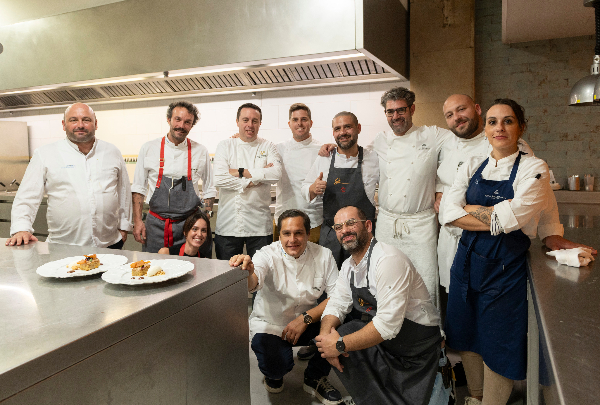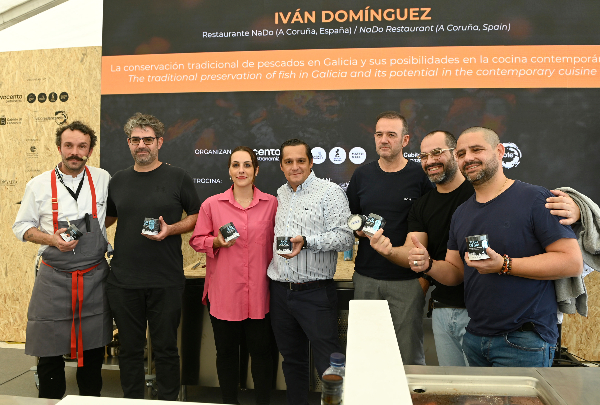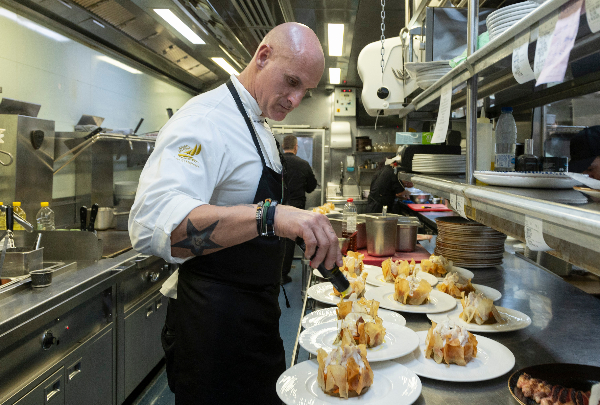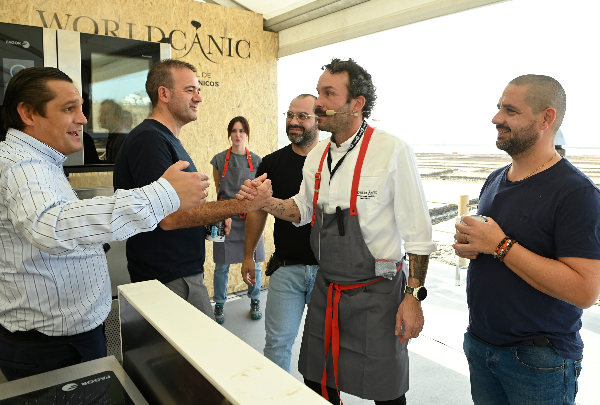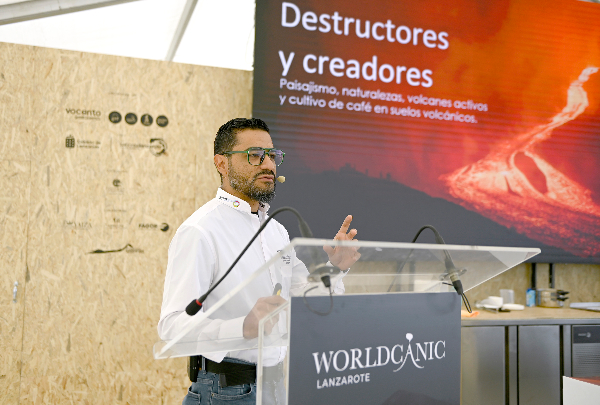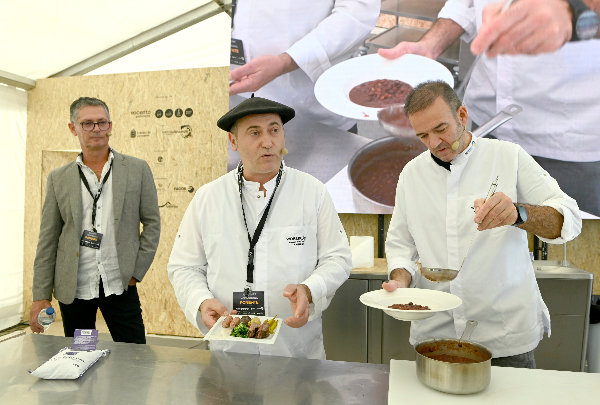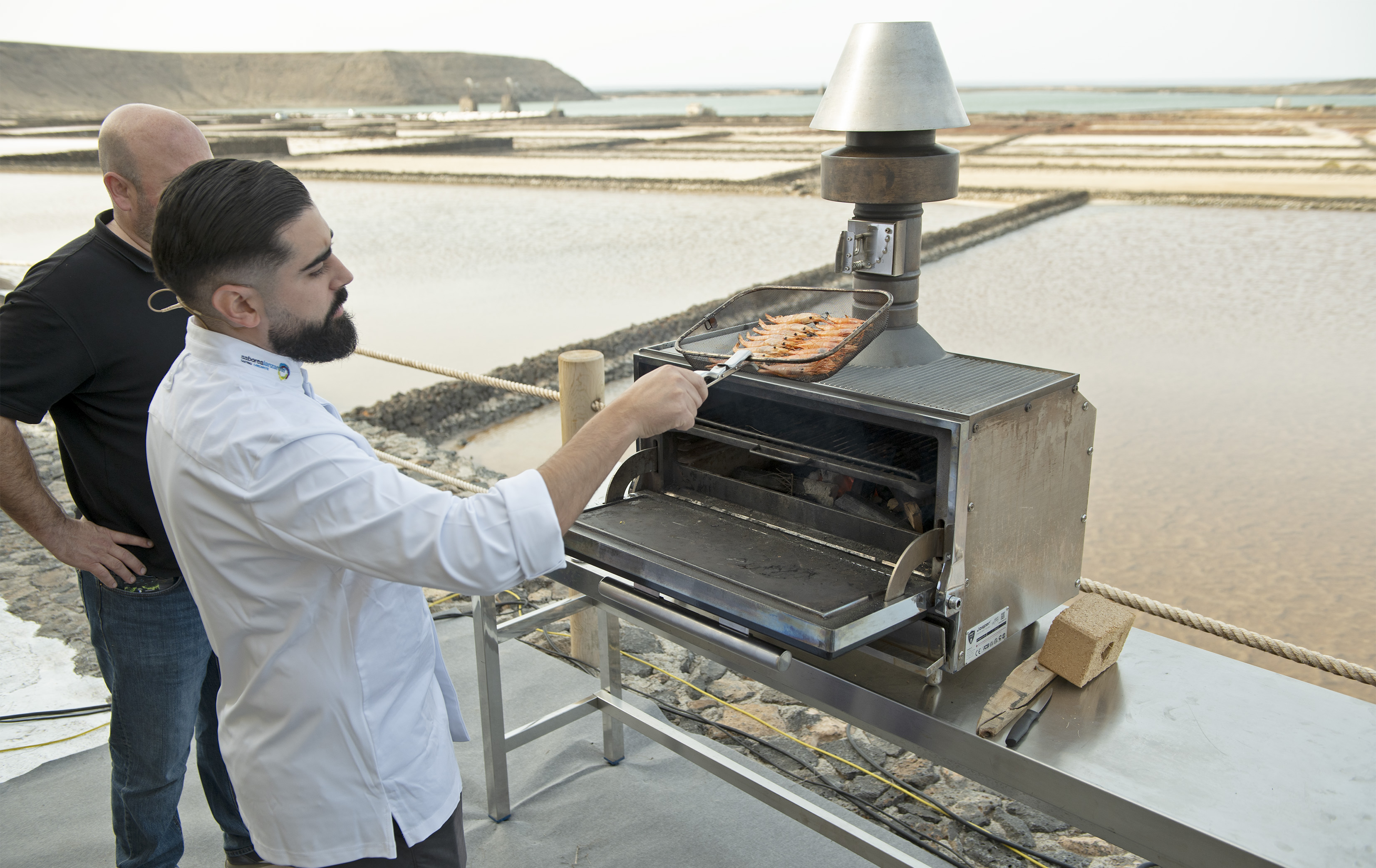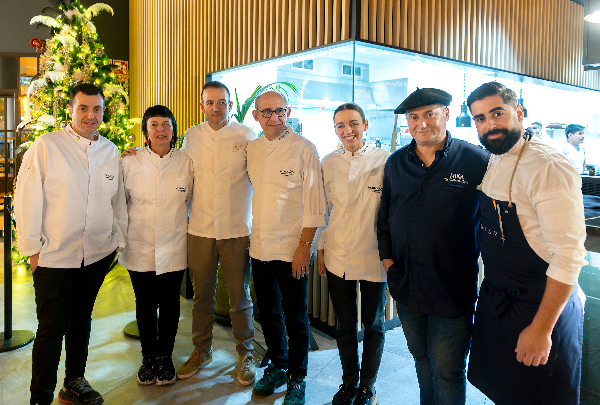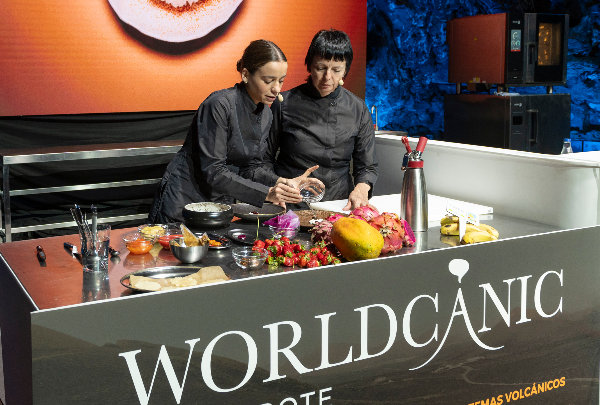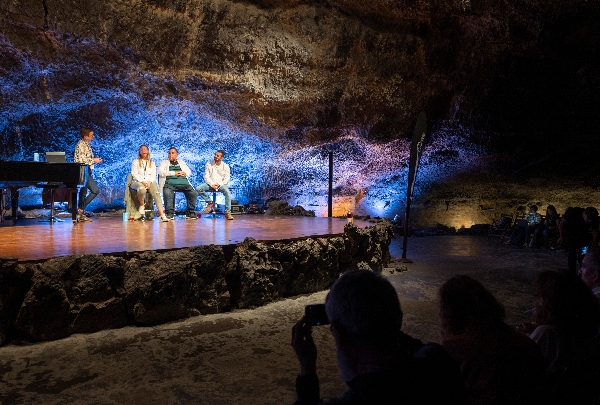News
The story of César Manrique and Lanzarote from Mirador del Río
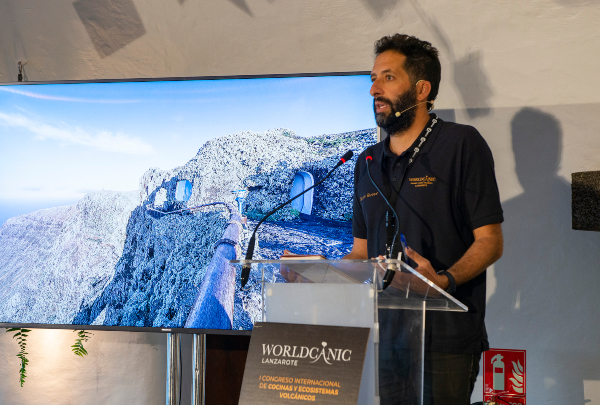
Local historian Mario Ferrer livens up the evening session of the first day of Worldcanic with an insight into the importance of the work of artist César Manrique in Lanzarote, from one of his creations, in fact: Mirador del Río.
With a chocolate apéritif courtesy of Bombonería La Corona (Arrecife) and Ave del Paraíso Premium Gin (Yaiza) made from sweet potatoes, among other ingredients, the evening session of the first day of Worldcanic was a history class about the island. The scenario could not have been better: Mirador del Río, one of the island's most representative architectural creations by César Manrique, a watchtower built in proximity to the remains of a former military base looking out onto the eighth Canary Island (La Graciosa) and the Archipelago Chinijo Nature Park. "Unlike many other creations, Mirador del Río demonstrates the artist's eagerness to combine art and nature".
The talk was by Mario Ferrer, a doctor of Information Sciences and a graduate in Journalism and the History of Art, and one of the local inhabitants best acquainted with his island. Ferrer gave the congress an agreeable talk on the history of Lanzarote, up to the impact on the island of the work of its most prominent artist. César Manrique was a Lanzarote artist who worked in Madrid and New York, but he left his mark on Lanzarote, and no mistake.
Ferrer explained: “In the 60s plans were laid to modernise the island in a bid to find alternatives to fishing, an industry which was already struggling and from which the population eked out a living. The plans included César Manrique, who not only drew up courses of action to improve tourism, but also changed the mindset and self-esteem of the people of Lanzarote. Until Manrique arrived on the scene, the local people saw the volcano as their prison. He changed all that. The islander realised that people coming from other places saw the volcano as something special. And he began to appreciate the local context”.
He exerted a particular influence at a time when, until he built Europe's first public drinking water facility and tourism began to take off, plans had even been made to evacuate the island, since it could not survive without water. “The change was drastic”, and the island's population increased from 15,000 to 150,000 in the present day.
Manrique built Mirador del Río, where the event was held; the Jameos del Agua Centre; the Cactus Garden; the Marine Village … “Manrique changed the island with a focus on sustainable tourism, with structures that sought to harmonise both the natural and cultural landscape”. A modus operandi with messages, said the historian, "which are so up-to-the-minute these days, such as respect for nature and the local side of things, with a clear concentration on sustainability”.
In this way, the Worldcanic congress learned a little more about the island hosting the congress. And they learned it in awe of what they heard and saw, looking across to La Graciosa from the huge vantage point of Mirador del Río. They had already done this during the morning session from the no less spectacular Jameos del Agua installation. History goes down better like this. In first person. Things that happen at an experiential congress.

